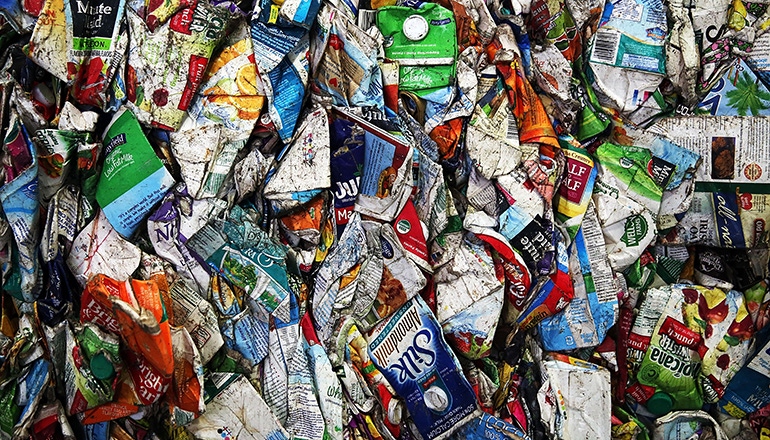Here's a look at what the organization has accomplished in the past 10 years and what’s ahead for the future of carton recycling.

The Carton Council of North America was conceived 10 years ago, when four competing carton manufacturers—Elopak, SIG Combibloc, Evergreen Packaging and Tetra Pak—came together to address an important need: carton recycling.
Since its formation, the Carton Council has promoted recycling technology and local collection programs. It has also grown awareness that cartons are recyclable, increasing the number of carton recycling programs and the amount of cartons recycled.
In 2009, only 18 percent of U.S. households had access to carton recycling, and the carton recycling rate was just 6 percent. Now, household access to food and beverage carton recycling is about 61 percent, and the carton recycling rate has increased to roughly 16 percent. Carton recycling programs now exist in 49 states, with more than 71 million U.S. homes able to recycle cartons via curbside or drop-off programs.

“When we set out to start the Carton Council, we viewed it as a marathon,” says Jason Pelz, vice president of recycling projects for the Carton Council. “We knew there was no quick fix, and we knew we would increase carton recycling over time.”
“In 10 years, our core philosophy hasn’t changed, but our ability to maneuver and to change with the times has gotten very good,” adds Pelz. “We’ve gotten smarter, so we haven’t been a group that’s been around for 10 years doing the same thing over and over. We’ve been looking at different angles for different things, and we’ve been trying to work with different people. I’m really proud of all of that, and I can say the commitment is the strongest it has ever been.”
Over the past 10 years, the Carton Council has seen a large increase in products being packaged in cartons, meaning more cartons have the potential to enter the recycling stream. However, education is needed to ensure these cartons do not end up in landfills and are instead recycled to be turned into new products.
“I think the biggest misconception is that people think cartons can’t be recycled because they are multilayered,” says Perz. “The fact is the components that make up cartons all have value, and from an education standpoint, we really need to make that clear for people so cartons can go on to be recycled to their fullest capability.”
Just like many materials, such as old corrugated cardboard, cartons require certain equipment to be recycled. Over the years, the Carton Council has worked with various partners to integrate smart technology into facilities to easily recycle cartons.
One of the Carton Council’s notable collaborations is with two Denver-based companies, AMP Robotics and Alpine Waste & Recycling. Via a pilot program, a robotic system learned to identify the wide variety of food and beverage cartons in order to grab and separate them from the recycling stream. The AMP Cortex, nicknamed “Clarke” after the sci-fi author and futurist Sir Arthur Charles Clarke, has spider-like arms with specially designed grippers to pick up and separate cartons at materials recovery facilities (MRFs).
Clarke was installed at Alpine Waste & Recycling in late 2016 and in other facilities since then. Through fine-tuning and adjustments, the artificial intelligence-guided system now picks and places material at a rate of 160 pieces per minute.
“Clarke provides a new and exciting approach to sorting recyclables. Currently there is nothing out there that does what this system does,” said Matanya Horowitz, CEO and founder of AMP Robotics, in a statement. “Clarke can be a cost-effective way for facilities to introduce new packaging that does not always have a large volume. Additionally, unique grippers can be developed to identify and pick contaminants, which is one of the biggest issues our industry currently faces.”
Combating contamination and boosting proper recycling efforts are top of mind right now, especially since the recycling industry is still adjusting to the impacts from China's National Sword and other countries' policies.
As markets fluctuate and product packaging changes, it’s important for the recycling industry to also make changes and to prepare for potential future changes.
“As product packaging changes, the recycling market needs to adapt to fit growing needs,” said Lydia Campbell, recycling program specialist for Anoka County, Minn., Public Health & Environmental Services, in a statement. “The work that the Carton Council has done accomplishes just that. Cartons are a popular packaging style, and incorporating them into curbside recycling programs is an obvious choice. It’s a substantial material stream, and our residents are happy that they can participate and keep more resources out of landfills.”

Looking to the future, the Carton Council has set some ambitious goals, including increasing household access to carton recycling to 75 percent and boosting the carton recycling rate to 25 percent by 2025.
“I’m really proud of what we’ve done—taken on this voluntary producer responsibility,” says Pelz. “Many people are focused on the short term right now, but looking ahead to the long term, cartons have a place. When it comes to recycling specifically, cartons are a very desirable fiber and a growing commodity … There are a lot of great benefits cartons bring, such as being space efficient and having a good product to package ratio, and if we can continue to strengthen the end of life of cartons and identify end markets, we’ll start to see some real positives.”
“The Carton Council is a resource, and although every MRF is different and every situation is different, best practices can be shared and lessons can be learned,” he adds. “Our job is to seek out where the opportunities are and highlight what the benefits are, so that we can get the true value out of recycling cartons.
About the Author(s)
You May Also Like




